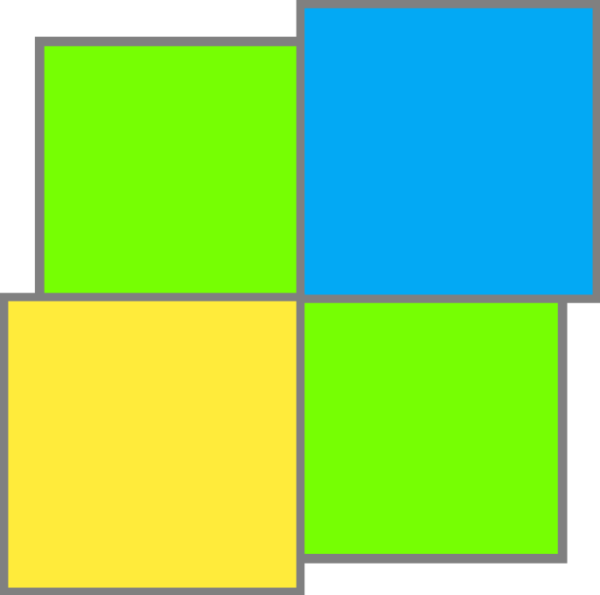So, you’re searching for a remote support tool and you want it to be cost-effective and packed with lots of handy features.
Let’s be clear: in fact, you don’t have to pay thousands of dollars to get the Swiss Army knife of all tools, as there’s a limited number of vital remote desktop features that your app of choice should include to deliver real value to your business and customers.
Here’s a checklist of 14 most important features to look for in a remote desktop application.

Unattended Access
As a remote support technician, you might often need to connect to a client’s computer when no one’s being physically present at the remote end. Or if you have to support specific customers on a regular basis.
In either case, this is where unattended access comes to help. With this feature, you won’t have to disrupt the client to grant control every time they need assistance and repeatedly walk them through the connection process.
Instead, you’ll enjoy having single-click remote access to the client’s computer at any time of the day.
Multi-Session Handling
Being able to multi-task effectively is key to providing high quality remote support. Unfortunately, many remote desktop software vendors put certain limitations on the number of support sessions you can run simultaneously.
However, wouldn’t it be handier to run as many sessions as you need to and conveniently switch between them in the process?
Here’s how you can do that with the help of the Techinline FixMe.IT application:
Multi-Window Control
The ability to open up multiple remote desktop control windows comes in handy when you need to support several users simultaneously.
FixMe.IT is one of the few tools that allow you to easily switch between a number of remote control windows, and even transfer files from one remote desktop to another by using the built-in drag-and-drop file transfer feature.
Built-In Chat
Instant messaging is everything nowadays, and remote tech support is no exception.
As soon as the remote connection is established, built-in chat will allow you and your client to exchange messages and stay updated on what’s happening on the remote end without having to pick up the phone or send an email every time a new issue arises.
File & Clipboard Transfer
This is also an absolute must-have, as you often need to install applications or replace a corrupted or outdated configuration file on the remote computer.
The clipboard sharing feature, in turn, is essential for tasks such as copying scripts or commands to the remote computer or an error message from the client’s computer.
In the absence of file/clipboard sharing capability, you would have to rely on third-party tools or email communication, which may significantly disrupt or delay the support session and incident resolution.
This means that having built-in file and clipboard sharing capability is critical for being able to deliver an effective level of technical support to your client.
Auto Reboot & Reconnect
Being able to reboot a remote computer and automatically reconnect is one of the most important features in a remote desktop tool. A reboot helps bring the computer to a relatively clean state by clearing caches, flushing the memory, and thus giving you the opportunity to start anew.
This “clean-sheet” is often required if a computer’s performance is shaky or requiring repair, which makes the auto-reboot function an absolute must-have during a technical support session.
Furthermore, technicians often install software patches and updates that require a reboot afterwards. Without a remote reboot feature, such tasks would otherwise require a termination of the support session and a new session to be started following each reboot.
Restart in Safe Mode
In many cases, a computer may be seriously infected to a point where it can function only in safe mode.
You can easily reach this starting point by rebooting the remote computer into safe mode and running antivirus software to cure infected files.
Log Off/Log On & Switch User
The ability to log on as a different user on a remote computer is very handy when you need to work on machines with multiple Windows User accounts. You may encounter such a scenario on shared computers within a corporate environment where multiple users are able to work only under their individual Windows accounts.
With the log off/log on feature, you’ll be able to install software or updates for each individual remote user. Otherwise, you’d be required to start a new session under each Windows user, which would significantly delay and complicate the job at hand.
This feature may also prove to be useful if you need to perform numerous operations that require admin rights. This way you’ll be able to connect to a limited user account and then elevate to the admin account in order to perform administrative tasks, such as installing software or changing settings that affect other users.
Two-Way Desktop Sharing
Let’s say you work for a software provider and as a remote support technician you need to educate users on your company’s product and its benefits. The two-way desktop sharing feature would be of great use here, as it lets you connect to a remote computer screen, share your own screen with just one customer, or even with multiple clients at once.
While two-way screen sharing is essential, it’s not enough for complete user experience during online demonstrations. Besides that, you’ll most probably need to help your customers better understand your instructions, and here’s when whiteboard tools such as laser pointer and pencil come to help.
Multi-Monitor Navigation
If your job is to remotely support designers or coders, or if you have a multi-monitor setup in the office and need to access your machine from home, then multi-monitor navigation would be a real life-saver.
With this feature, you’ll be able to easily view and navigate through any number of screens connected to a remote computer. Here’s how it works:
Remote Screen Scaling
The remote screen scaling feature makes it easier for you to work on a remote machine that has a larger or smaller screen resolution than yours. With FixMe.IT, you can always choose between three scaling options to adjust the remote control window based on the remote user’s screen resolution settings, or according to your own preferences.
Session Usage Reporting
Being able to run session reports is another vital feature to have. If you operate a one-man tech support business, it will allow you to keep track of your own work, or if you’re a manager of a large company’s helpdesk team, this feature will help you stay on top of how and when your software’s being used.
Video Session Recording
Apart from the ability to log your remote support sessions, having the option to record and store them for future demonstration and education purposes also comes in handy.
Branding & customization
With scamming and other online fraudulent activities on the rise, it’s extremely important for customers to distinguish legit remote support services from those that can’t be trusted.
Software branding options available in many remote desktop tools including Techinline FixMe.IT, allow you to customize the client application to match the looks of your brand and website, and help eliminate possible confusion among new customers.
Is there any important remote desktop feature we missed here? Let us know in the comments!
Follow us on Facebook and Twitter, join our community on LinkedIn, and subscribe to our channel on YouTube to get all the latest demos, news and updates as they happen.
